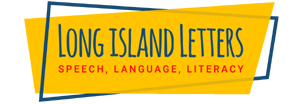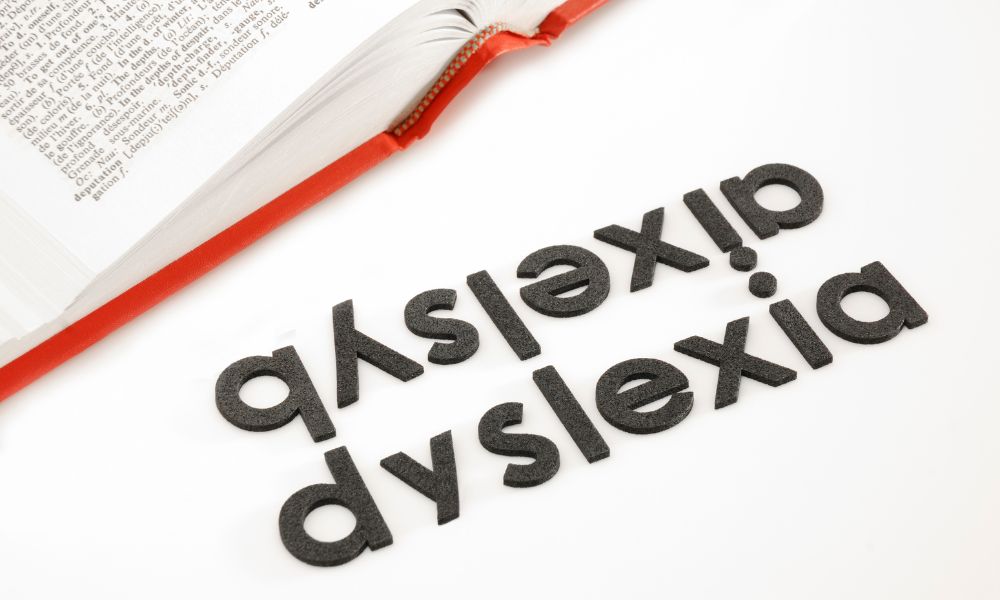Dyslexia and Speech Therapy: Unlocking Language Skills
Introduction
Dyslexia is a common learning difference that affects how individuals process language, including reading, writing, and spelling. While dyslexia primarily impacts reading skills, it can also affect speech and language development. Speech therapy, with its expertise in communication disorders, plays a crucial role in supporting individuals with dyslexia. This blog will explore the connection between dyslexia and speech therapy, highlighting the benefits and strategies that speech therapists utilize to help individuals with dyslexia enhance their language skills.
Understanding Dyslexia
Dyslexia is not related to intelligence but reflects a neurological difference that affects how the brain processes information. Individuals with dyslexia may experience difficulties with phonological processing, which involves recognizing and manipulating the sounds of language. This can result in challenges with decoding words, spelling, and reading fluency.
Signs Your Child May Have Dyslexia
Dyslexia is a learning disorder that affects a person’s ability to read, write, and spell. It typically becomes noticeable in childhood when children start learning to read and write. Here are some signs that your child may have dyslexia:
- Difficulty with reading: Your child may struggle with reading, finding it challenging to recognize letters, associate them with sounds, and blend them together to form words.
- Problems with spelling: Dyslexic children often have difficulty with spelling and may consistently misspell words, even those they have seen and practiced before.
- Slow reading: Your child may read at a slower pace compared to their peers. They may struggle to maintain a steady reading rhythm and may need more time to decode words.
- Letter and number reversals: Dyslexic children may frequently confuse letters or numbers that look similar, such as “b” and “d” or “6” and “9.”
- Difficulty with phonemic awareness: Phonemic awareness refers to identifying and manipulating sounds in spoken words. Dyslexic children may have trouble recognizing and working with the individual sounds in words.
- Poor handwriting: Dyslexia can also affect a child’s handwriting, making it messy and difficult to read. They may have trouble forming letters correctly and struggle with spacing between words.
- Difficulty with sequencing: Dyslexic children may have difficulty remembering and reproducing the sequence of letters, numbers, or events. This can impact their ability to follow instructions, organize their thoughts, and learn sequential information.
- Avoidance of reading and writing: Children with dyslexia often develop negative attitudes toward reading and writing activities. They may try to avoid tasks that involve reading or writing, and they may exhibit frustration, anxiety, or low self-esteem when faced with these activities.
- Family history: Dyslexia can have a genetic component, so if there is a family history of dyslexia, the likelihood of a child having it may be higher. It’s important to note that dyslexia can manifest differently in different individuals, and not all children will exhibit every sign.
If you suspect your child may have dyslexia, it’s best to consult with professionals such as educators, pediatricians, or psychologists who specialize in learning disorders. They can conduct assessments and provide appropriate interventions and support for your child. Discover what dyslexia assessment is and how it can help students with dyslexia and other processing disorders to catch up to grade-level literacy skills.
Dyslexia is a specific learning disorder that primarily affects reading and writing skills. While dyslexia is a lifelong condition, the specific challenges and manifestations of dyslexia can change over time as students progress through school. Here are some general observations about how dyslexia may change in school-age students:
- Early years (Kindergarten to Grade 2): In the early years of schooling, dyslexic students may struggle with letter recognition, phonemic awareness (identifying and manipulating individual sounds in words), and basic reading skills. They may experience difficulties in rhyming, decoding words, and spelling.
- Elementary school (Grade 3 to Grade 6): As students advance in elementary school, the challenges related to dyslexia may become more evident. Students may continue to struggle with reading fluency and accuracy, comprehension, and written expression. Difficulties with phonics, word recognition, and spelling are still common.
- Middle school (Grade 7 to Grade 9): Dyslexic students in middle school may face additional challenges as they encounter more complex texts and assignments. Reading comprehension becomes increasingly important, and students may struggle with understanding abstract or nuanced concepts. Written expression may continue to be a challenge, including grammar, organization, and coherence.
- High school (Grade 10 to Grade 12): In high school, dyslexic students may develop compensatory strategies to cope with their reading and writing difficulties. They might rely on assistive technology, such as text-to-speech software or speech recognition tools, to support their academic tasks. However, challenges with reading speed, complex vocabulary, and decoding unfamiliar words can persist. Writing longer essays or research papers may be particularly challenging due to difficulties with organization, planning, and editing.
Remember, dyslexia is a lifelong condition, but appropriate interventions and accommodations can significantly affect individuals’ experiences and outcomes. While the challenges may evolve with age, the core difficulties associated with dyslexia remain consistent. With the right support, individuals with dyslexia can continue to grow, learn, and achieve their goals at any stage of life.
The Role of Speech Therapy
Speech therapy is often an integral part of a comprehensive approach to dyslexia intervention. While speech therapy cannot cure dyslexia, it can address specific language-related challenges and provide strategies to improve communication skills. Here are some key areas where speech therapy can make a significant impact:
- Phonological Awareness: Speech therapists work on developing phonological awareness skills, which involve understanding and manipulating the sounds in spoken language. By focusing on tasks like rhyming, segmenting, and blending sounds, individuals with dyslexia can strengthen their foundation for reading and spelling.
- Articulation and Phonetics: Speech therapists help individuals with dyslexia improve their articulation skills by targeting the accurate production of speech sounds. Enhancing phonetic awareness and sound discrimination can positively influence decoding and reading abilities.
- Language Skills: Dyslexia can impact broader language skills, such as vocabulary, grammar, and comprehension. Speech therapists address these challenges by working on vocabulary expansion, sentence structure, and understanding of written and spoken language.
- Reading Fluency: While speech therapy primarily focuses on spoken language, it can indirectly support reading fluency by improving phonological skills, auditory processing, and overall language proficiency.
- Assistive Technology: Speech therapists may introduce and train individuals with dyslexia to use assistive technology tools that aid reading and writing. Text-to-speech software, speech recognition software, and apps designed for dyslexia can provide valuable support in educational and everyday settings.
How Does a Speech Therapist Treat Dyslexia?
Speech therapists typically play a role in assessing certain aspects of language and phonological processing relevant to dyslexia. Here are some common methods they may use as part of the assessment process:
- Case history interview: The speech therapist will gather information about the child’s developmental history, language skills, reading and writing abilities, and any concerns or difficulties experienced by the child or their parents/teachers.
- Language assessment: The speech therapist will assess various language skills, such as vocabulary, grammar, comprehension, and expressive language abilities. Language difficulties can be an indication of dyslexia or related language-based learning disorders.
- Phonological awareness assessment: Phonological awareness refers to the ability to recognize and manipulate the sounds in spoken words. The therapist may assess the child’s skills in tasks such as identifying rhyming words, segmenting words into individual sounds, blending sounds to form words, and manipulating sounds within words.
- Reading and writing assessment: The speech therapist may evaluate the child’s reading and writing skills to identify specific difficulties related to dyslexia. This may involve assessing reading accuracy, fluency, comprehension, and spelling abilities.
- Observation and informal assessment: The therapist may observe the child’s behaviors and interactions related to reading and writing. They may look for signs of letter reversals, difficulties with word decoding, reading speed, comprehension struggles, or issues with writing mechanics.
- Collaboration with other professionals: Depending on the extent of the assessment, the speech therapist may collaborate with other professionals, such as educational psychologists or educational diagnosticians, who can administer additional tests specifically designed to diagnose dyslexia. These tests may assess cognitive abilities, academic skills, and other factors related to dyslexia diagnosis.
It’s important to note that while speech therapists can provide valuable insights and assessments related to language and phonological processing, a comprehensive evaluation for dyslexia may involve multiple professionals from different disciplines working together. This interdisciplinary approach helps ensure accurate diagnosis and appropriate intervention planning for the child. Learn why so many dyslexia diagnoses are often missed by too many schools.
Conclusion
Dyslexia presents unique challenges in the realm of language and literacy, but with the right support, individuals with dyslexia can develop strong language skills and achieve academic success. Speech therapy plays a vital role in addressing the language-related difficulties associated with dyslexia. Through targeted interventions, strategies, and collaboration with other professionals, speech therapists empower individuals with dyslexia to unlock their language potential and thrive in their academic and personal lives.
Remember, dyslexia does not define a person’s abilities or limit their potential. With understanding, support, and specialized intervention, individuals with dyslexia can overcome challenges and embrace their strengths, becoming confident communicators and lifelong learners.
Early intervention is key to unlocking the potential of individuals with dyslexia. By identifying and addressing dyslexia at an early stage, we can provide targeted support, build crucial skills, and foster a positive mindset. With early intervention, individuals with dyslexia can overcome challenges, develop their strengths, and embark on a path toward a brighter future filled with academic success, self-confidence, and personal fulfillment. Let’s prioritize early intervention for dyslexia and empower individuals to thrive!


